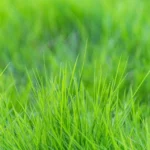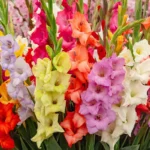
Japanese Maples are cherished for their stunning beauty and cultural significance, making them a popular choice among gardeners and landscape enthusiasts. Known for their delicate leaves and vibrant colors, these trees thrive in various settings, from serene gardens to urban landscapes. Their unique characteristics, such as sensitivity to frost and a wide range of cultivars, contribute to their allure. Additionally, hybrid varieties are being developed to enhance their resilience, while notable gardens like the Portland Japanese Garden showcase their breathtaking diversity. With a rich history and a strong presence in Japanese culture, the Japanese Maple continues to captivate people around the world.
Species Origin: Japanese Maple (Acer palmatum) is a deciduous tree native to the regions of Japan, Korea, and China. It thrives in temperate climates and is particularly well-suited to the moist, fertile soils found in these areas. The tree has been cultivated in Japan for centuries, where it has become an integral part of traditional gardens and landscapes, symbolizing beauty and tranquility.
Height: Japanese Maple trees typically grow to an average height of 10 to 25 feet (3 to 7.5 meters). Their size can vary significantly depending on the cultivar and growing conditions. While some varieties are bred to be compact and suitable for smaller gardens, others can reach impressive heights, making them suitable for larger landscapes. Their graceful form and layered branching structure contribute to their aesthetic appeal.
Lifespan: With proper care, Japanese Maples can have a remarkable lifespan, often exceeding 100 years. This longevity is a testament to their resilience and adaptability. Gardeners who invest time in nurturing these trees can enjoy their beauty for generations. Factors such as soil quality, water availability, and protection from pests and diseases play crucial roles in determining their lifespan.
Leaf Shape: The leaves of the Japanese Maple are characteristically palmate, resembling the shape of a hand with multiple lobes. Most leaves have between 5 to 9 lobes, creating a delicate and intricate appearance. This unique leaf structure not only adds visual interest but also contributes to the tree’s ability to photosynthesize efficiently. The leaves can vary in size, typically ranging from 2 to 5 inches (5 to 12 cm) across.
Color Variations: One of the most enchanting features of Japanese Maples is their ability to change color throughout the seasons. In spring, new leaves often emerge in vibrant shades of red or purple, transitioning to green in summer. As autumn arrives, many cultivars showcase spectacular hues of red, orange, and yellow, creating a stunning display that attracts attention in gardens and parks. This seasonal transformation is influenced by environmental factors such as temperature and sunlight.
Cultivar Count: There are over 1,000 different cultivars of Japanese Maple, each with its unique characteristics, including size, leaf shape, and color. This extensive variety allows gardeners to select the perfect tree for their specific landscape needs. Some popular cultivars include ‘Bloodgood,’ known for its deep red foliage, and ‘Sango Kaku,’ recognized for its striking coral bark. The diversity among cultivars makes Japanese Maples a versatile choice for various garden styles.
Smallest Cultivar: The ‘Shishigashira’ cultivar, also known as the lion’s head maple, is one of the smallest varieties of Japanese Maple, typically growing only 3 to 4 feet (0.9 to 1.2 meters) tall. Its compact size makes it ideal for small gardens or container planting. The leaves of ‘Shishigashira’ are unique, with a crinkled texture that adds a distinct visual appeal. This cultivar is particularly popular in bonsai cultivation due to its manageable size and aesthetic qualities.
Largest Cultivar: The ‘Osakazuki’ cultivar is known for its impressive height, capable of reaching up to 30 feet (9 meters) under optimal growing conditions. This variety is celebrated for its vibrant fall colors, often turning a brilliant crimson. The ‘Osakazuki’ is a great choice for larger landscapes where it can serve as a focal point. Its robust structure and expansive canopy provide ample shade, making it a valuable addition to any garden.
Bark Color: As Japanese Maples mature, their bark develops a striking appearance, often becoming a smooth gray or brown that peels in thin strips. This peeling bark not only adds texture to the tree but also provides visual interest throughout the year, even in winter when the leaves have fallen. The bark’s color and texture can vary among different cultivars, contributing to their overall ornamental value in the landscape.
Flowering Season: Japanese Maples bloom in spring, typically between April and May, producing small, inconspicuous flowers that are often overshadowed by the tree’s foliage. The flowers can be red, pink, or green, depending on the cultivar, and they develop into samaras (winged seeds) that are dispersed by the wind. While the flowers may not be the main attraction, they play a crucial role in the tree’s reproductive cycle and contribute to the overall health of the tree.
Seed Dispersal: The seeds of the Japanese Maple are small, winged samaras that facilitate wind dispersal. These seeds can travel up to 100 feet (30 meters) from the parent tree, allowing the species to propagate effectively. The samaras typically mature in late summer and fall, and their lightweight structure enables them to be carried by breezes, increasing the chances of germination in suitable locations. This natural dispersal mechanism is vital for the tree’s reproduction and expansion in the wild.
Foliage Density: Japanese Maple trees are known for their dense foliage, which provides excellent shade and visual appeal. The layered branching structure creates a lush canopy that can filter sunlight effectively, making it a popular choice for gardens where shade is desired. This density also offers habitat for various birds and beneficial insects, contributing to the overall biodiversity of the garden. The aesthetic quality of the foliage, especially in vibrant colors during fall, enhances the beauty of landscapes.
Soil Preference: Japanese Maples thrive in well-drained, slightly acidic soil, typically with a pH between 5.5 and 6.5. This preference for soil conditions is crucial for their health and growth, as overly alkaline or waterlogged soils can lead to root rot and other issues. Gardeners are advised to amend their soil with organic matter to improve drainage and acidity. Testing soil pH before planting can help ensure optimal conditions for these trees, leading to robust growth and vibrant foliage.
Water Requirements: Japanese Maples require approximately 1 inch (2.5 cm) of water per week, particularly during dry periods. Adequate watering is essential for maintaining healthy foliage and preventing stress. While established trees can tolerate some drought, young trees are more vulnerable and need consistent moisture to develop strong root systems. Mulching around the base of the tree can help retain soil moisture and regulate temperature, promoting overall health.
Sunlight Needs: These trees thrive best in partial shade, especially in hotter climates, where too much direct sunlight can lead to leaf scorch. Ideally, they should receive morning sun with some afternoon shade to protect their delicate leaves from intense heat. In cooler climates, they can tolerate full sun, but gardeners should monitor their trees for signs of stress. Understanding the light requirements of specific cultivars can help ensure optimal growth and vibrant foliage.
Pruning Time: The best time to prune Japanese Maples is during late winter or early spring, just before new growth begins. Pruning at this time minimizes stress on the tree and encourages healthy new growth. Proper pruning techniques, such as removing dead or crossing branches and maintaining the tree’s natural shape, are essential for promoting airflow and preventing disease. Careful pruning also enhances the tree’s aesthetic appeal, allowing for a more open and attractive canopy.
Fall Foliage: One of the most celebrated features of Japanese Maples is their stunning fall foliage. Many cultivars exhibit brilliant shades of red, orange, and yellow as temperatures drop in autumn. This seasonal transformation is influenced by the tree’s genetics and environmental conditions, such as light exposure and temperature fluctuations. The vibrant colors make Japanese Maples a popular choice for landscape design, as they provide a spectacular display that attracts attention and enhances garden aesthetics.
Cultural Significance: In Japan, the Japanese Maple is more than just a decorative tree; it holds deep cultural significance. It is often associated with traditional Japanese gardens, symbolizing grace, beauty, and the transient nature of life. The tree is celebrated in various art forms, including painting and poetry, and is featured prominently in seasonal festivals. Its cultural importance reflects the Japanese appreciation for nature and the changing seasons, making it a cherished element in gardens.
Wood Usage: The wood of the Japanese Maple is dense and strong, making it suitable for various woodworking applications. It is often used to create fine furniture, cabinetry, and decorative items. The attractive grain and color of the wood add to its desirability for craftspeople and artisans. Additionally, the wood is sometimes used in musical instruments, where its tonal qualities enhance sound. Sustainable harvesting practices are important to ensure the continued availability of this valuable resource.
Pests: Japanese Maples can be susceptible to various pests, with aphids and scale insects being the most common. Aphids feed on the sap of the leaves, leading to curling and yellowing, while scale insects can create a sticky residue and weaken the tree. Regular monitoring and early intervention, such as introducing beneficial insects or using insecticidal soap, can help manage these pests. Maintaining tree health through proper care and cultural practices can also reduce the likelihood of pest infestations.
Frost Sensitivity: Young leaves of Japanese Maples are particularly sensitive to late spring frosts, which can pose a significant threat to new growth. These delicate leaves, which emerge in vibrant colors during the spring, can be damaged by unexpected drops in temperature. When frost occurs, it can cause the leaves to become discolored, wilt, or even die back, affecting the overall health of the tree. Gardeners should be vigilant in monitoring weather forecasts during late spring and may consider protective measures, such as covering the plants or using frost cloths, to shield them from potential frost damage.
Notable Gardens: The Portland Japanese Garden in Oregon is celebrated for its extensive collection of Japanese Maples, showcasing a wide variety of cultivars that highlight the beauty and diversity of this species. This garden features over 100 different types of Japanese Maples, each selected for its unique form, color, and seasonal interest. Visitors can experience the stunning foliage that ranges from vibrant greens to deep reds and purples, especially during the fall when the leaves transform into a breathtaking palette of colors. The garden serves not only as a place of beauty but also as an educational resource, promoting appreciation for Japanese horticultural practices and the cultural significance of these trees.
Price Range: The price of Japanese Maples can vary significantly based on the cultivar and size, typically ranging from $50 to over $1,000. Smaller, more common varieties may be found at lower price points, while rare or larger specimens can command higher prices due to their unique characteristics and the care taken in their cultivation. Factors influencing the cost include the age of the tree, its size, the rarity of the cultivar, and the nursery’s reputation. Gardeners looking to add a Japanese Maple to their landscape should consider their budget alongside the long-term investment in care and maintenance that these trees require.
Hybrid Varieties: In recent years, hybrid varieties of Japanese Maples have been developed to enhance disease resistance and offer unique coloration that appeals to a broader range of gardeners. These hybrids often combine traits from different cultivars to produce trees that are not only aesthetically pleasing but also more resilient to common pests and diseases. For instance, some hybrids may exhibit improved tolerance to drought or better adaptability to various soil conditions. The ongoing breeding efforts aim to create trees that maintain the classic beauty of traditional Japanese Maples while providing enhanced hardiness and ease of care.
National Recognition: The Japanese Maple holds a significant cultural status in Japan, where it is celebrated in various festivals and events throughout the year. This tree is often associated with traditional Japanese gardens, where its graceful form and stunning foliage contribute to the serene landscape. During the autumn months, many festivals are dedicated to the appreciation of the changing colors of the leaves, known as “koyo.” These events attract visitors who come to witness the breathtaking display of red, orange, and yellow foliage, reflecting the deep cultural connection the Japanese people have with nature and seasonal changes. The Japanese Maple is not just a plant but a symbol of beauty and transience, embodying the principles of harmony and balance in Japanese aesthetics.
FAQs About Japanese Maples
General Information
Q: What is a Japanese Maple?
A Japanese Maple (Acer palmatum) is a deciduous tree native to Japan, Korea, and China. Renowned for its elegant foliage, which often displays stunning colors in autumn, it’s a popular ornamental tree for gardens. Its size varies widely from dwarf varieties to larger trees, and leaf shapes and colors can also differ greatly depending on the cultivar.
Q: Where do Japanese Maples grow best?
A: Japanese Maples thrive in USDA hardiness zones 5 to 8. They prefer dappled sunlight or partial shade and well-drained, acidic soil. While they can tolerate some sun, excessive heat and direct sunlight can scorch their leaves.
Q: How fast do Japanese Maples grow?
A: Japanese Maples are known for their slow to moderate growth rate. This makes them ideal for smaller gardens or bonsai enthusiasts.
Q: How big do Japanese Maples get?
A: The size of a Japanese Maple depends on the cultivar. They range from dwarf varieties that stay under 3 feet to larger trees that can reach 20-30 feet tall.
Care and Maintenance
Q: How do I care for a Japanese Maple?
A: Proper care for a Japanese Maple involves:
- Watering: Regular watering, especially during dry periods, is essential. Avoid overwatering as it can lead to root rot.
- Soil: Well-drained, acidic soil is preferred. Adding organic matter like compost can improve soil quality.
- Pruning: Light pruning can be done in late winter or early spring to shape the tree. Avoid heavy pruning as it can damage the tree.
- Fertilizing: Apply a balanced, slow-release fertilizer in spring. Avoid excessive fertilization, as it can lead to leaf burn.
- Protection from Extremes: Protect your Japanese Maple from extreme heat, cold, and wind.
Q: Why is my Japanese Maple losing leaves?
A: Several factors can cause leaf loss:
- Pests and Diseases: Check for common pests like aphids, spider mites, or scale insects. Diseases like powdery mildew can also affect leaves.
- Environmental Stress: Insufficient water, excessive heat, or cold can lead to leaf drop.
- Nutrient Deficiencies: A lack of essential nutrients can cause leaf discoloration and drop.
Q: Can I grow a Japanese Maple in a container?
A: Yes, many Japanese Maple cultivars are well-suited for container gardening. Choose a dwarf or semi-dwarf variety and use a well-draining potting mix. Repotting every 2-3 years is recommended.
Propagation and Problems
Q: How do I propagate a Japanese Maple?
A: Japanese Maples can be propagated through:
- Seeds: This is a time-consuming process and often results in variations from the parent plant.
- Cuttings: Taking softwood cuttings in late spring or early summer is a common method.
- Grafting: For specific cultivars, grafting is used to preserve desired characteristics.
Q: What are common problems with Japanese Maples?
A: Common problems include:
- Pests: Aphids, spider mites, and scale insects can infest Japanese Maples.
- Diseases: Powdery mildew and leaf spot are common fungal diseases.
- Sun Scorch: Excessive sunlight can burn leaves.
- Winter Injury: Extreme cold can damage the tree.
Q: How do I protect my Japanese Maple from deer?
A: Deer find Japanese Maples to be a delicacy. To protect your tree, you can use deer repellents, physical barriers, or netting.









